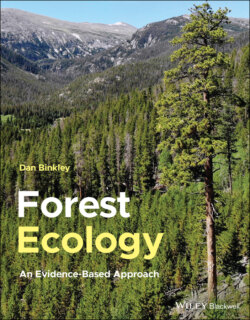Читать книгу Forest Ecology - Dan Binkley - Страница 11
How Confident Should You Be?
ОглавлениеThe confidence warranted in the truth of art or religion does not depend on the strength of evidence. The confidence warranted in scientific ideas always depends on evidence. Some scientific ideas warrant more confidence than others, and a scale of increasing confidence would be:
Weakest: Ideas based on appealing thoughts or concepts;
Weak: Analogies where well‐tested insights from another area of knowledge are extended to a new area;
Moderately strong: Ideas supported by good evidence from one or a few case studies or experiments; and
Strong: Evidence‐based ideas with robust trends across many locations and periods of time.
This is also a scale representing how surprising it would be to find out an idea was wrong, with the level of surprise increasing down the list. These distinctions may seem a bit dull and uninteresting, but the differences are as important as a person trying to fly on a magic carpet, to fly like a bird, to fly in an experimental airplane, or to fly in airplane certified to be safe with a record of thousands of hours of safe flights. Which approach to flying warrants the highest confidence for arriving safely at a distant destination?
One of the most common sources of creative ideas is making analogies. This tree has fruits that look like acorns, just like oaks have acorns, so this tree belongs with the group of oak species. Another analogy would be that aspen trees regenerate across burned hillsides and so do lodgepole pine trees, so aspen belongs in the group that lodgepole pine belongs in. Analogies may be true or false, but the key is to recognize that analogies represent only an initial, incomplete step of science. An analogy is reliably useful only when challenged by evidence. The acorn example could be challenged in many ways, including comparing other features of the tree with other oak trees, or especially by comparing DNA and genes. The analogy between the aspen and pine is not so obviously useful. If a grouping included trees that do well after severe fires, the trees indeed share useful features. For any other grouping, such as a suitability to feed beavers or mountain pine beetles, they clearly do not.
Creative ideas may begin as concepts or analogies, but gauging confidence depends on taking the next step to list the similarities and differences between the objects or sets of objects. An analogy might have more potential for useful insights when the similarities include major, diverse features. Analogies are less useful (or even harmful) when the list of key differences is substantial (Neustadt and May 1986).
